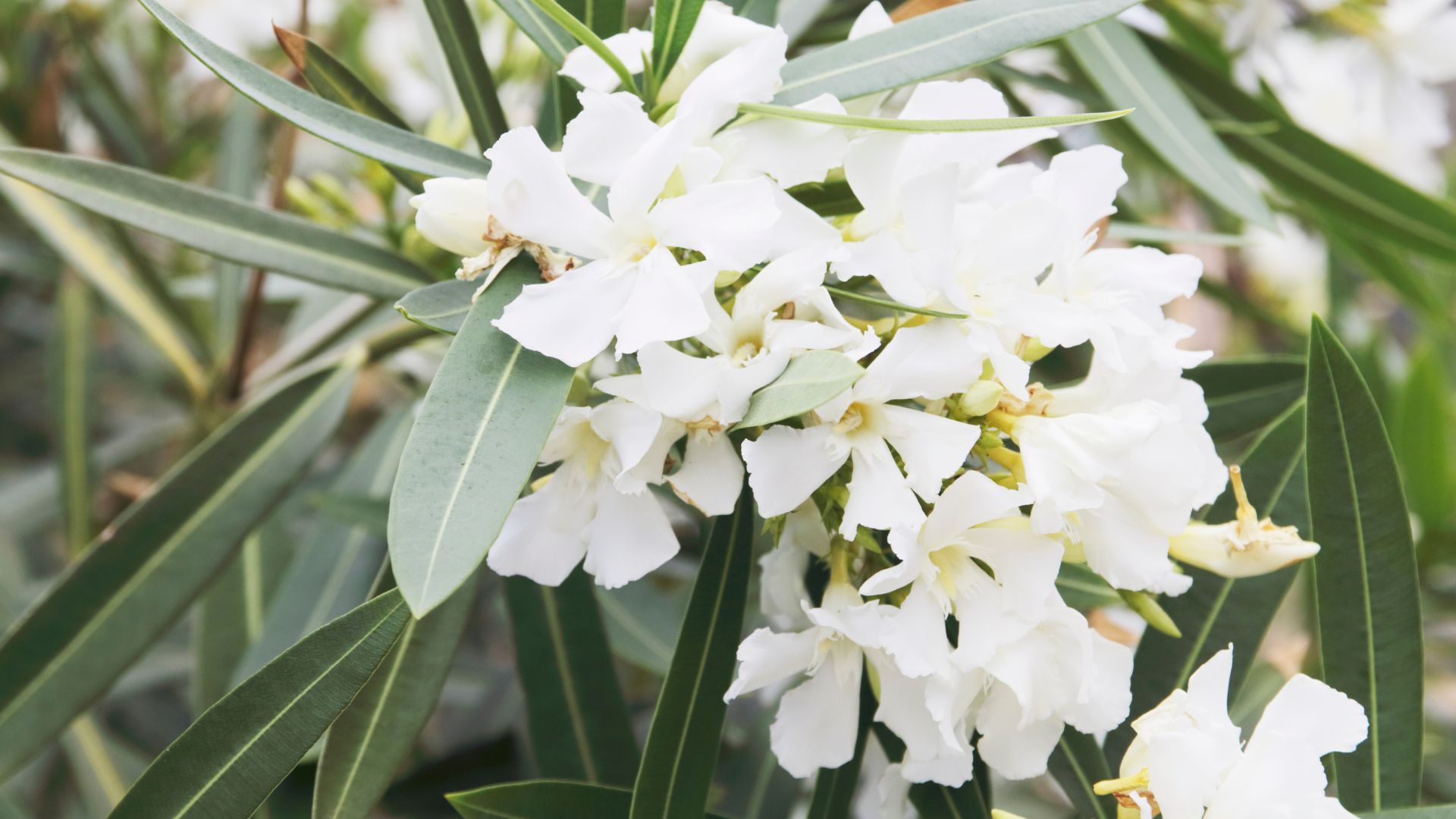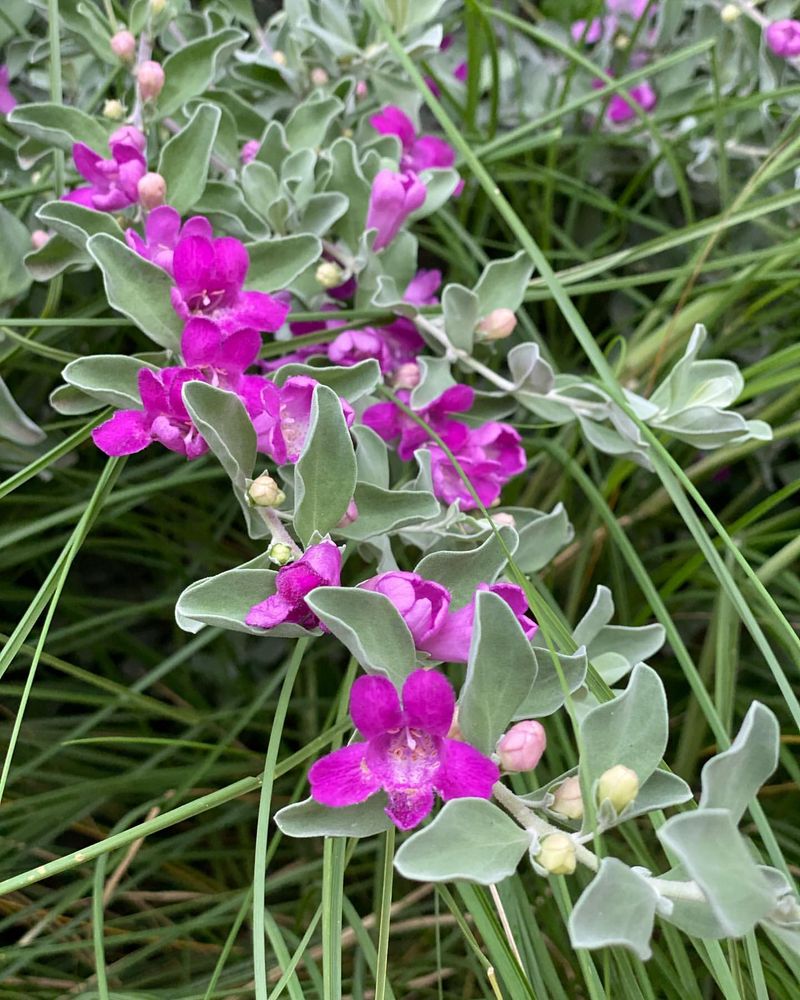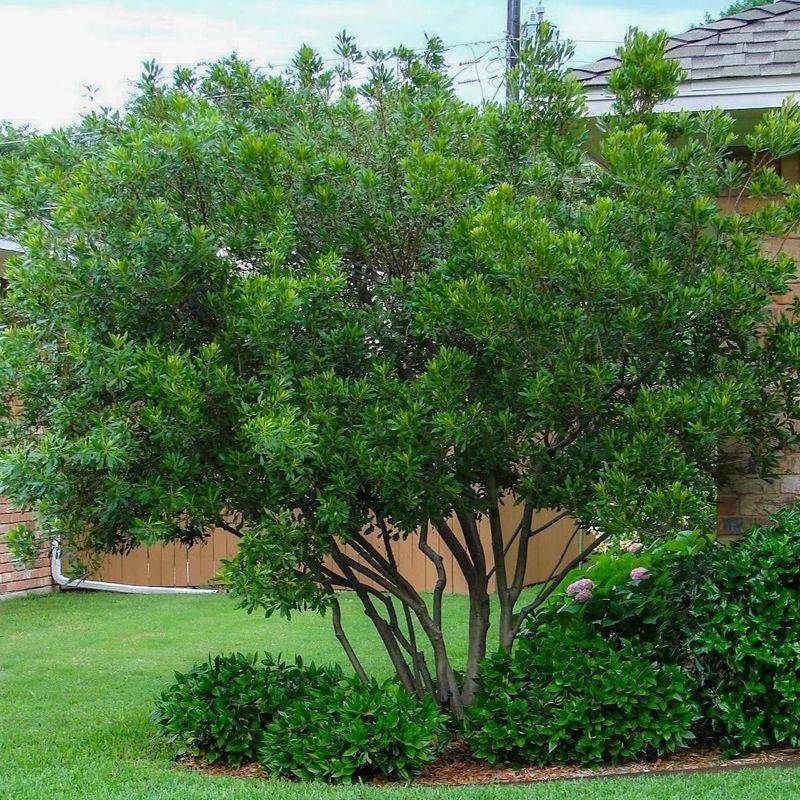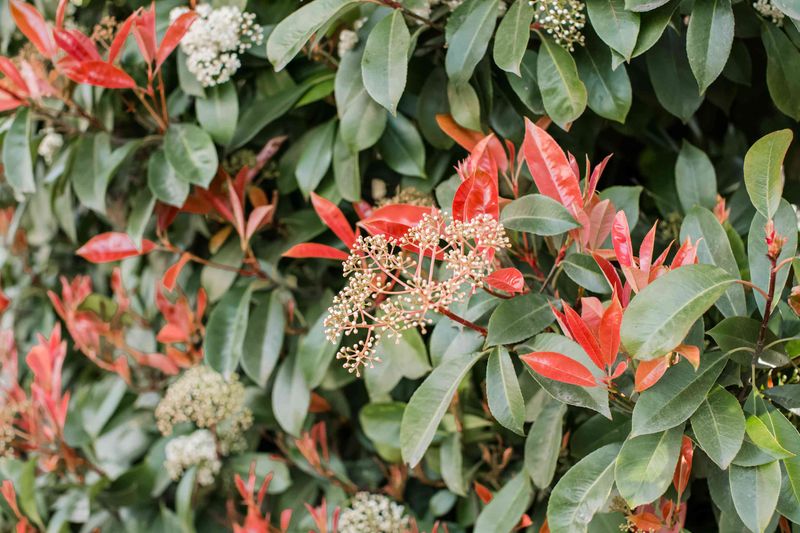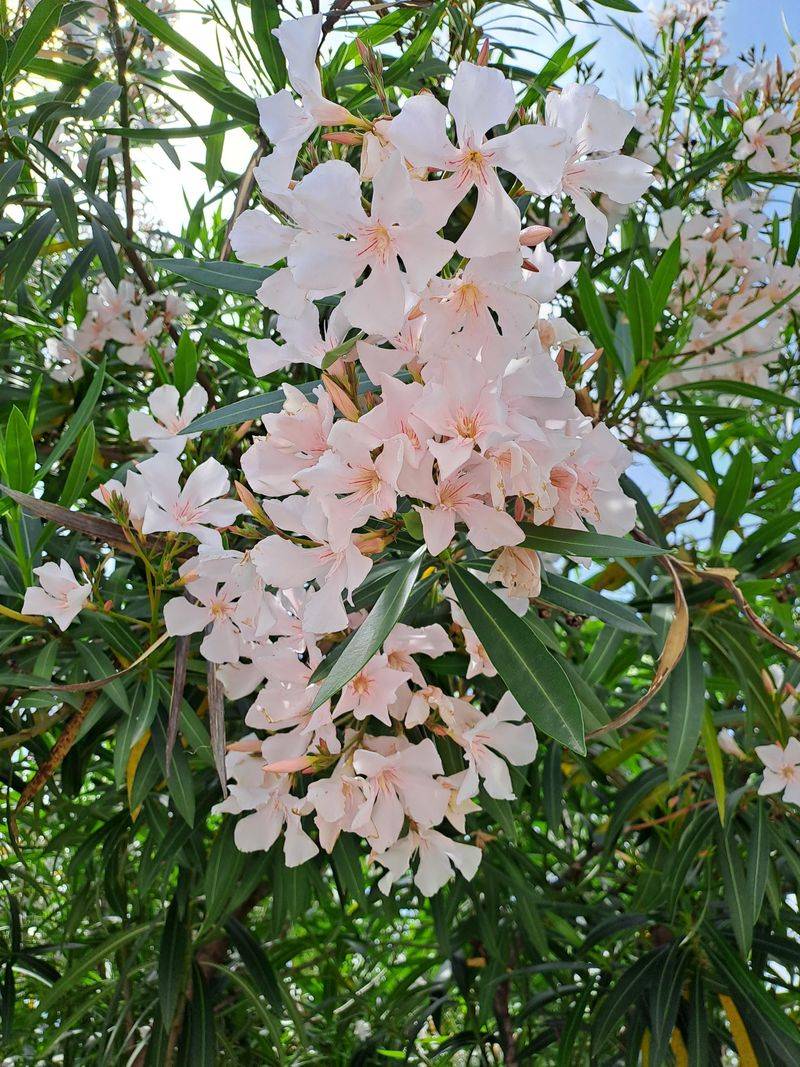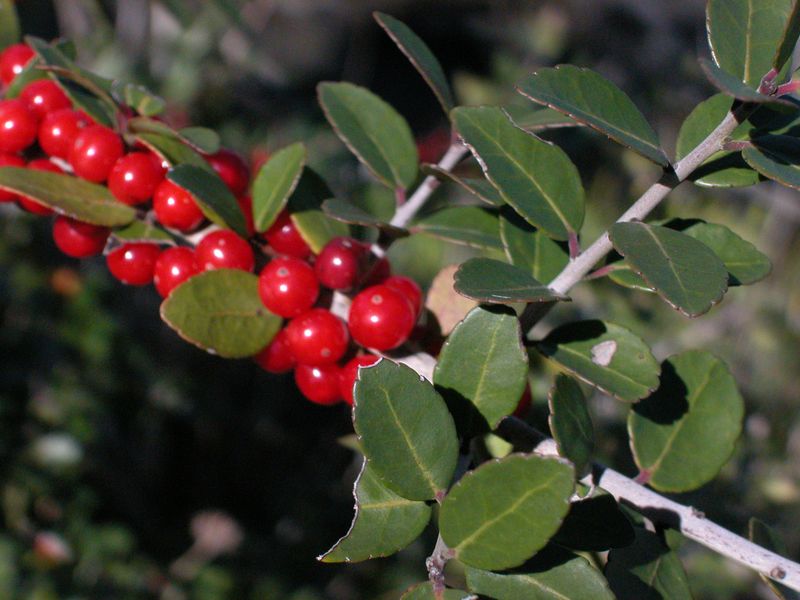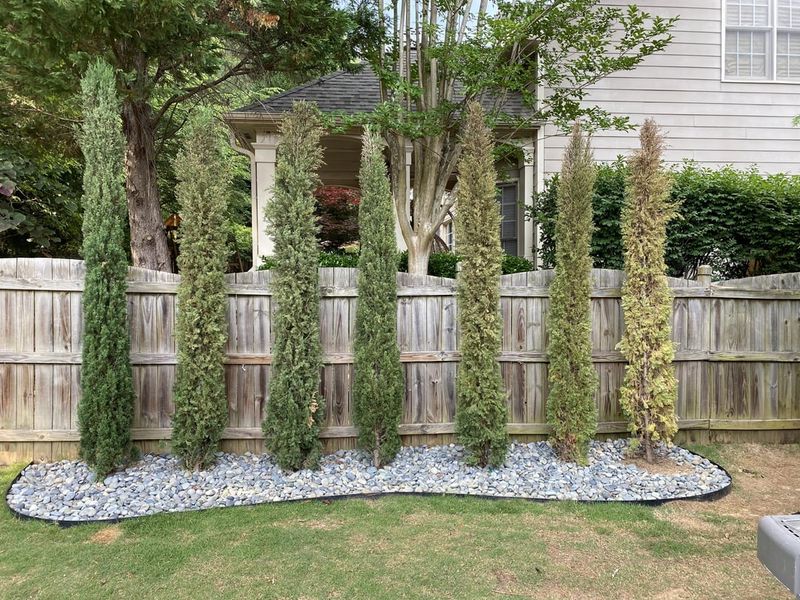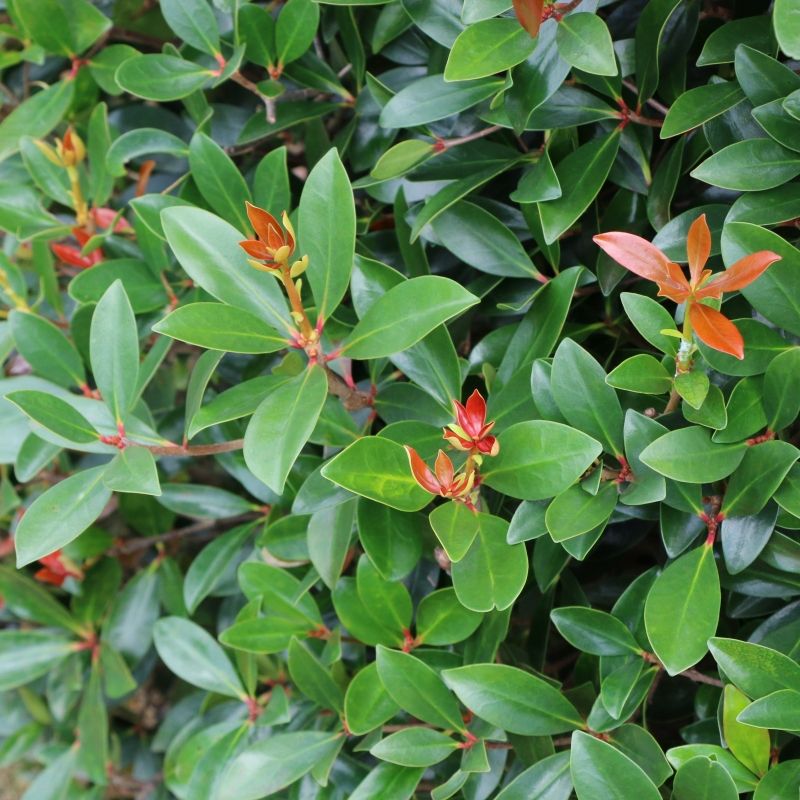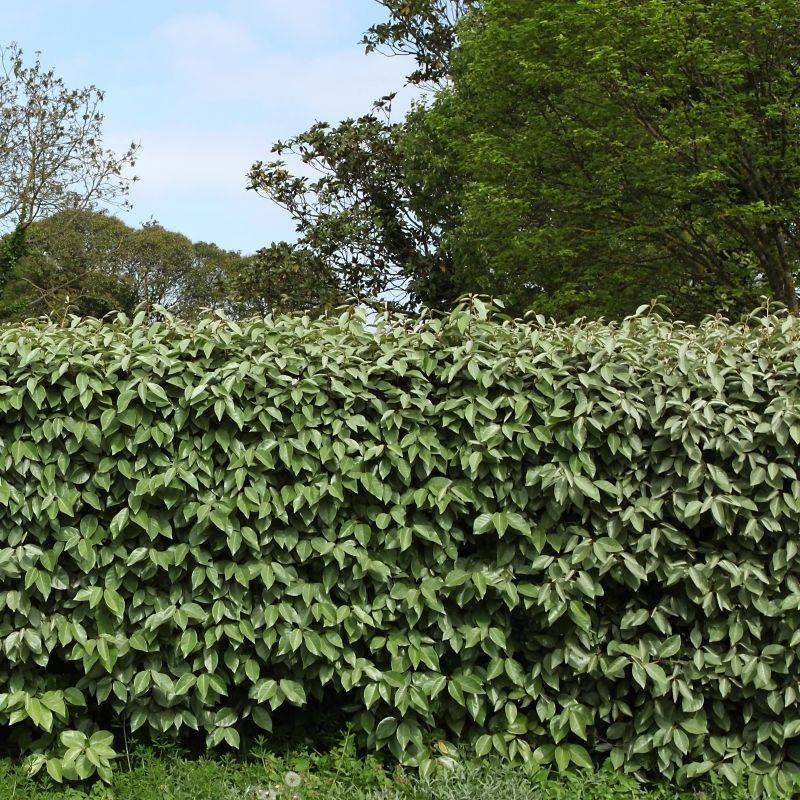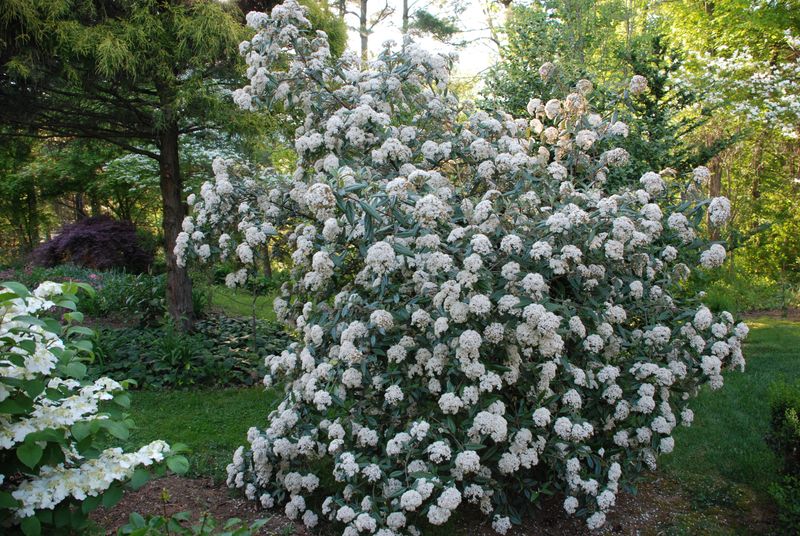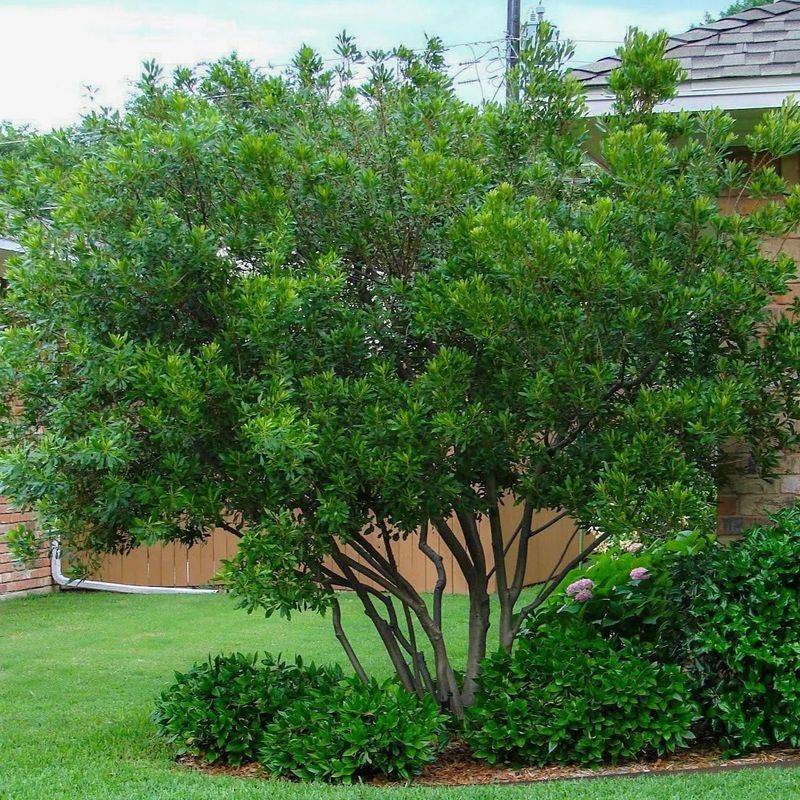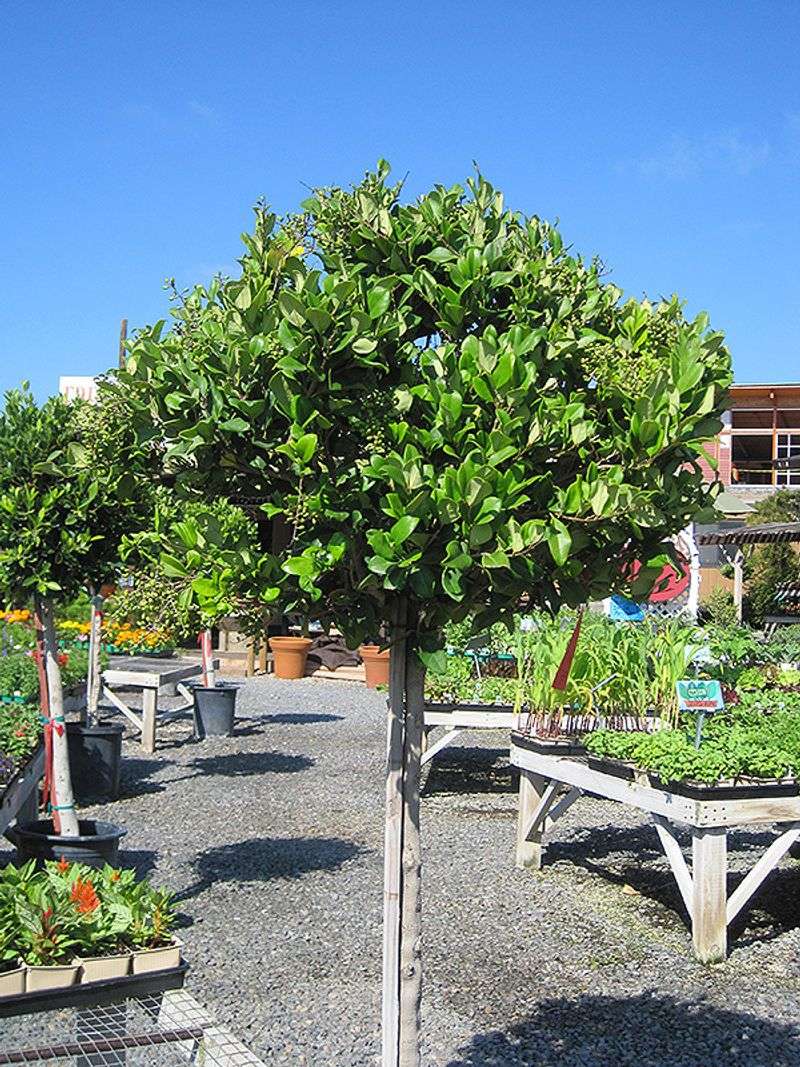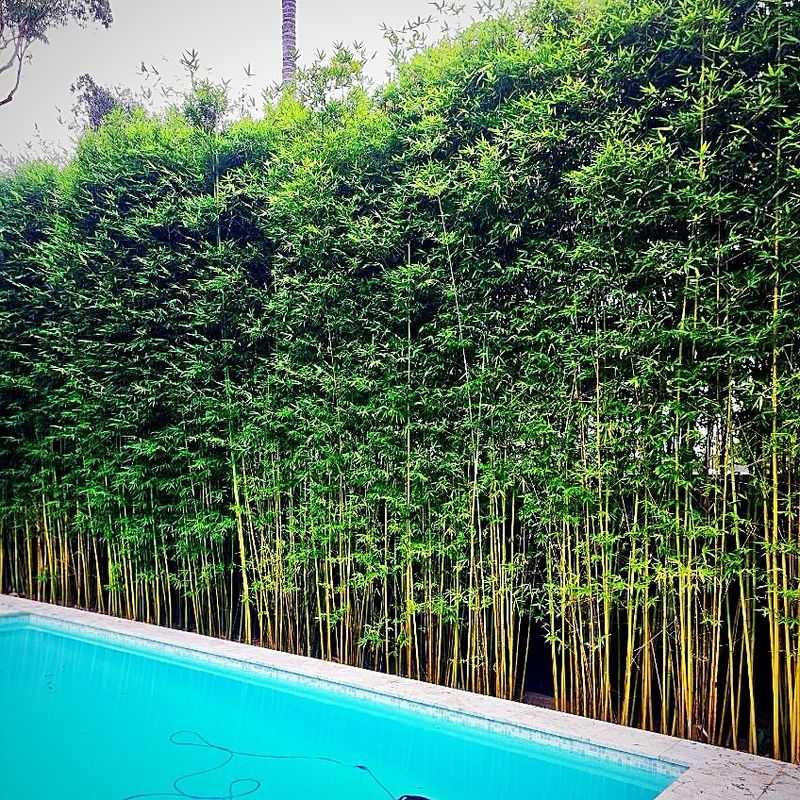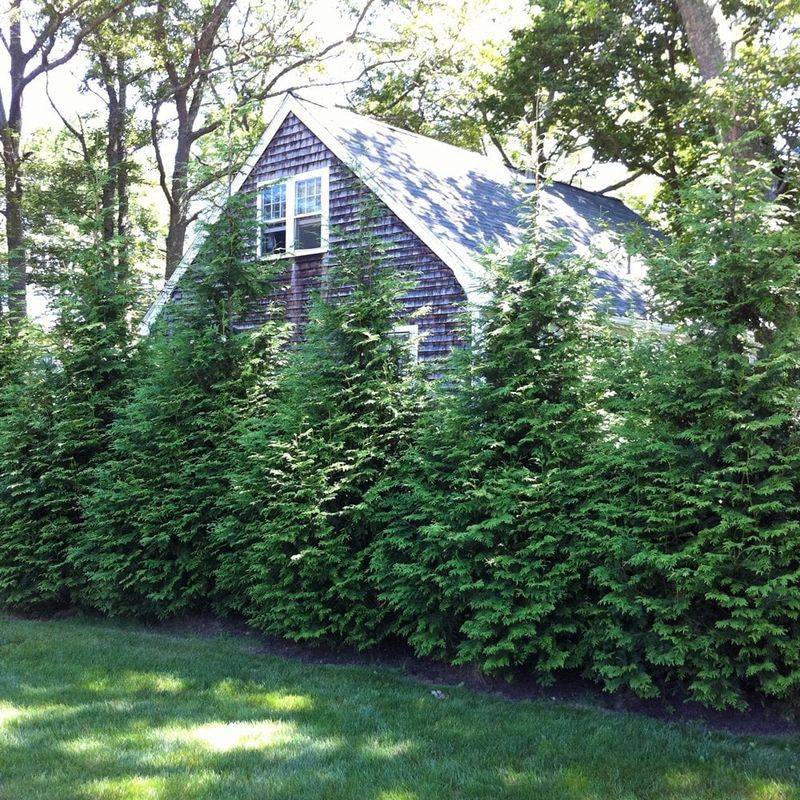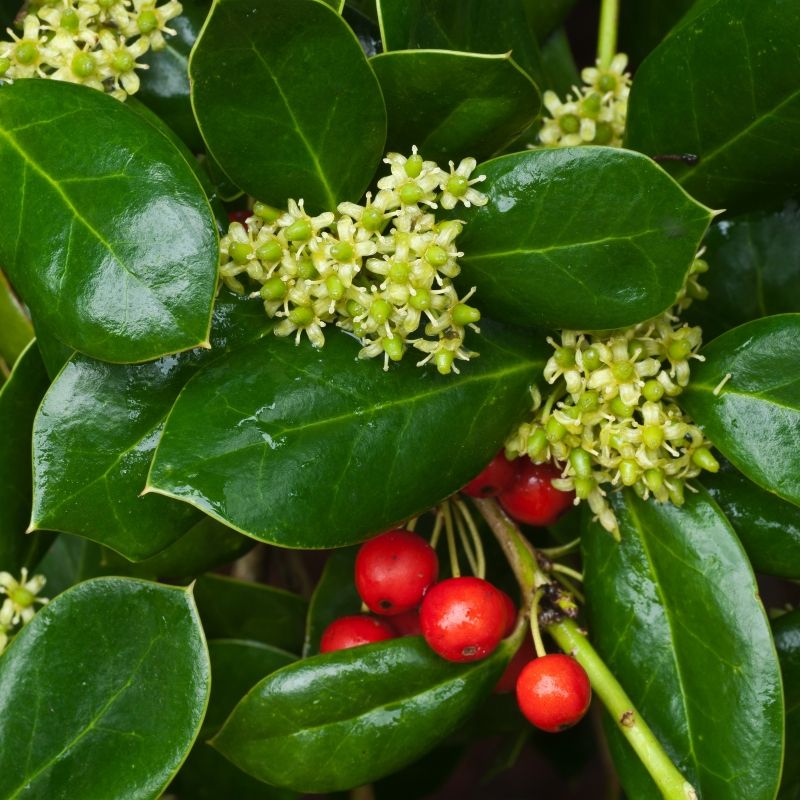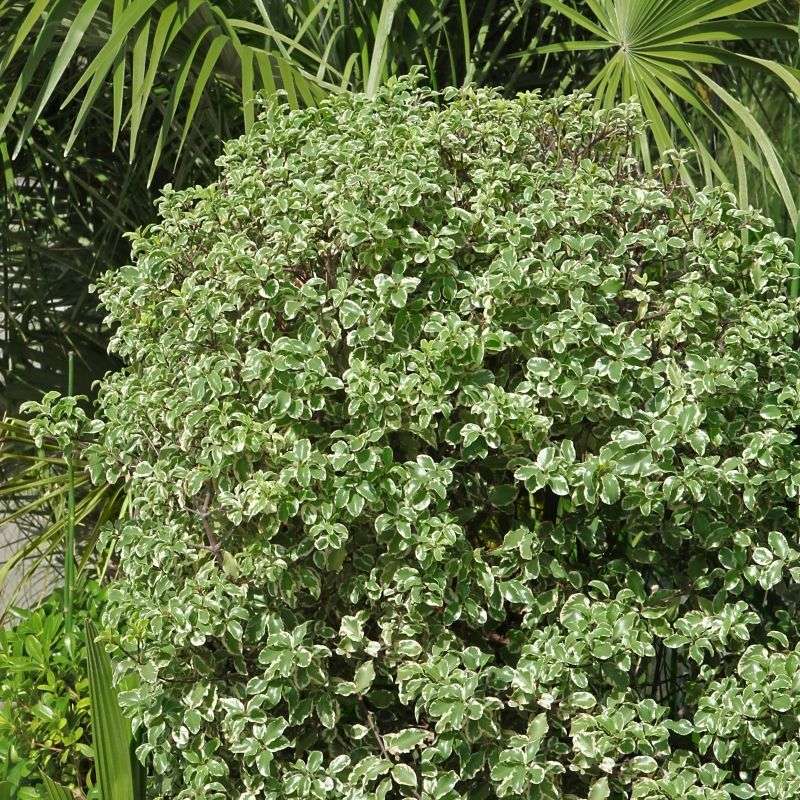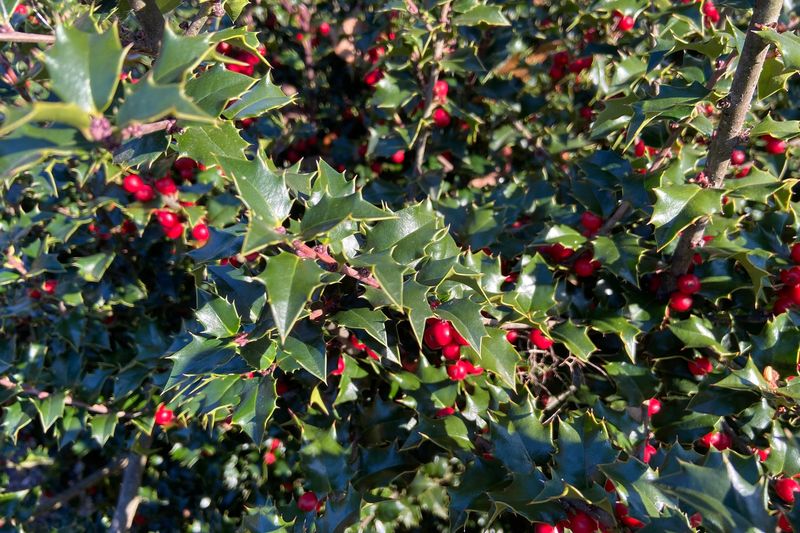Want a natural way to boost privacy in your Texas yard? Shrubs offer a lush, living alternative to fences—and they’re built to handle the heat. With the right picks, you’ll get beauty, shade, and seclusion all in one.
From drought-tough natives to colorful bloomers, there’s a shrub for every style and space. These plants thrive in Texas’s challenging climate while adding texture and charm to your landscape. It’s privacy with personality.
Whether you’re blocking a view or carving out a quiet corner, privacy shrubs make it feel effortless. They soften your yard’s edges and create a peaceful retreat—no wood panels required.
1. Texas Sage (Leucophyllum frutescens)
Also called Texas Ranger, this native superstar thrives in our brutal summer heat with minimal care. The silvery-gray foliage creates a stunning backdrop in any landscape.
During summer rainstorms, it erupts with purple blooms that attract butterflies and hummingbirds. I’ve found it nearly indestructible in my Central Texas garden, bouncing back even after harsh winters.
Plant several in a row for a drought-resistant privacy screen that tops out at 8 feet tall. No need for constant pruning or babying – this tough plant practically takes care of itself.
2. Wax Myrtle (Myrica cerifera)
Growing up to 20 feet tall, wax myrtle forms a dense evergreen screen perfect for blocking nosy neighbors. The aromatic leaves give off a pleasant scent when brushed against, adding sensory appeal to your yard.
Birds absolutely love the waxy berries that appear on female plants in fall. My feathered visitors in Houston fight over them every year! For best results, plant in groups with about 4 feet between each shrub.
Adaptable to both wet and dry conditions, wax myrtle handles the unpredictable Texas weather swings without complaint. It’s particularly well-suited for the eastern parts of the state.
3. Red Tip Photinia (Photinia x fraseri)
When new growth emerges, the brilliant red tips give this popular privacy shrub its name and create a stunning visual display. The mature height reaches 10-15 feet, making it ideal for screening second-story windows.
Dense branching habits ensure neighbors can’t peek through, while the glossy evergreen leaves maintain privacy year-round. Just be aware that in extremely humid areas of East Texas, leaf spot can sometimes be an issue. Many Hill Country homeowners have had success with this adaptable shrub.
Plant them 4-6 feet apart, and within a few seasons, you’ll have a solid living wall that requires minimal maintenance beyond occasional pruning.
4. Cherry Laurel (Prunus caroliniana)
Cherry laurel creates a handsome formal hedge with its glossy dark green leaves that stay put all year long. Hardy throughout Texas, it’s particularly appreciated in the northern parts where winters can be rough.
The fragrant white flower clusters appear in early spring, followed by small black berries that wild birds can’t resist. I’ve watched cardinals feast on mine for hours during winter months when food is scarce.
Reaching 15-20 feet if left unpruned, cherry laurel can be maintained at any height with regular trimming. The dense growth pattern forms an excellent sound barrier for homes near busy streets or noisy parts of town.
5. Oleander (Nerium oleander)
Fast-growing and drought-resistant, oleander quickly creates a colorful privacy screen in South and Central Texas. The stunning flowers bloom nearly year-round in coastal areas, adding vibrant pinks, reds, or whites to your landscape.
Salt tolerance makes it especially valuable for Gulf Coast properties where other plants struggle. During my visits to Galveston, I’m always impressed by how these tough shrubs thrive despite the salty air and occasional flooding.
Just remember that all parts are toxic, so place away from areas where children and pets play. With minimal care, oleanders can reach 8-12 feet tall and almost as wide, forming an impressive living wall.
6. Yaupon Holly (Ilex vomitoria)
Native to Texas, yaupon holly thrives in almost any soil type across the state. The dense, fine-textured foliage creates an excellent year-round screen that can be pruned into formal shapes or left naturally mounded.
Female plants produce bright red berries in fall that persist through winter, creating seasonal interest and feeding wildlife. The berries against the dark green leaves make for a stunning holiday display without any decorating effort.
Dwarf varieties stay compact at 3-5 feet, while standard types can reach 15-20 feet tall. After the 2021 freeze, my neighbor’s yaupons were among the first shrubs to recover fully, proving their remarkable resilience to Texas weather extremes.
7. Italian Cypress (Cupressus sempervirens)
Reaching for the sky with their dramatic columnar form, Italian cypresses create privacy without taking up much ground space. Perfect for narrow side yards where width is limited but height is needed to block views. Heat and drought tolerance make them well-suited for West Texas landscapes.
Their architectural shape adds a Mediterranean or Tuscan feel to any garden design, bringing a touch of European elegance to Texas yards.
Growing up to 40 feet tall but just 3-5 feet wide, these distinctive trees require no pruning to maintain their slender silhouette. Plant them 3 feet apart for a living fence that makes a bold statement while providing excellent screening.
8. Cleyera (Ternstroemia gymnanthera)
New growth emerges with a beautiful bronze-red color before maturing to glossy deep green. This elegant shrub creates a refined privacy screen that looks at home in both traditional and contemporary landscapes across Texas.
Small, fragrant white flowers appear in spring, followed by tiny red berries that gradually turn black. Unlike some other privacy options, cleyera maintains a naturally neat appearance with minimal pruning requirements.
Growing 8-10 feet tall, it performs beautifully in partial shade, making it valuable for east or north-facing boundaries. The dense growth habit ensures no gaps form between plants, maintaining complete privacy year after year.
9. Elaeagnus (Elaeagnus ebbingei)
Silver-speckled leaves catch the sunlight and shimmer in the breeze, making elaeagnus as ornamental as it is functional. The fast growth rate means you’ll have privacy sooner rather than later – expect 2-3 feet per year under good conditions.
Fall brings tiny, incredibly fragrant flowers that smell like gardenia and perfume the entire yard. After moving to my Dallas home, I was surprised by the sweet scent one October evening, having no idea these unassuming shrubs could produce such amazing fragrance.
Reaching 8-10 feet tall and nearly as wide, elaeagnus forms a substantial barrier with minimal care. Its adaptability to poor soils makes it valuable for challenging spots where other plants struggle.
10. Viburnum (Viburnum species)
Several viburnum varieties excel in Texas, with Sweet Viburnum and Awabuki being particularly successful for privacy. Large, leathery leaves create a dense screen that effectively blocks unwanted views all year.
Spring brings clusters of fragrant white flowers, followed by colorful berries that attract birds and wildlife. The scent reminds me of my grandmother’s garden – sweet but not overpowering, just enough to notice when you walk by.
Most viburnums reach 8-12 feet tall and wide, creating substantial living walls. They appreciate morning sun with afternoon shade in the hottest parts of Texas, thriving especially well in the eastern regions where humidity is higher.
11. Southern Waxmyrtle (Myrica cerifera)
Naturally adapted to Texas conditions, Southern Waxmyrtle creates an aromatic privacy screen that deer typically avoid. The olive-green foliage has a pleasant scent when crushed or brushed against, adding sensory appeal to your landscape.
Berries produced on female plants attract over 40 species of birds. During winter in my San Antonio garden, I’ve spotted everything from cardinals to warblers feasting on these nutritious fruits. With a mature height of 10-15 feet, this native shrub forms an excellent year-round screen.
Its ability to handle wet feet makes it especially valuable for low-lying areas or properties with drainage issues where other privacy options might fail.
12. Japanese Privet (Ligustrum japonicum)
Tough as nails, Japanese privet handles the worst Texas can throw at it – heat, drought, poor soil, you name it. The glossy evergreen leaves maintain a neat appearance year-round with minimal maintenance required.
White flower clusters appear in spring, creating a beautiful display against the dark foliage. Some gardeners find the fragrance pleasant, while others consider it too strong – plant where the scent won’t overwhelm outdoor living spaces.
Growing 8-12 feet tall and wide, Japanese privet quickly establishes a substantial privacy screen. After the devastating 2021 freeze, many Austin homeowners reported their privets survived when other evergreens failed – a testament to their remarkable hardiness.
13. American Holly (Ilex opaca)
Spiny, distinctive leaves make American holly instantly recognizable and create an effective deterrent for both human and animal intruders. The classic holiday look brings year-round beauty to Texas landscapes, especially when bright red berries appear on female plants.
Wildlife value is tremendous – birds nest in the dense branches while enjoying protection from predators. I’ve watched mockingbirds raise multiple broods in my holly hedge, safely hidden from neighborhood cats and hawks.
Slow-growing but long-lived, these native trees eventually reach 15-30 feet tall. Plant where you want permanent privacy, as American hollies can live for 100+ years, becoming more valuable and beautiful with each passing decade.
14. Bamboo (Phyllostachys species)
For rapid privacy, nothing beats bamboo – some varieties grow several feet in a single season! The graceful canes and rustling leaves create a tranquil, exotic atmosphere in Texas gardens while effectively screening unwanted views.
Running types require barriers to prevent spreading, while clumping varieties stay put. After experimenting with both in my Houston yard, I strongly recommend clumping types like Alphonse Karr or Buddha’s Belly for most homeowners. Heights range from 8 to 25+ feet depending on the variety.
The cooling effect of bamboo is remarkable – walking near my grove on a hot August day feels noticeably more comfortable than standing in the open yard.
15. Arborvitae (Thuja occidentalis)
Emerald Green and Green Giant varieties perform best in North Texas, creating dense, columnar privacy screens that maintain their good looks year-round. The soft, scale-like foliage has a pleasant fragrance when touched.
Narrow footprint makes arborvitae ideal for smaller properties where space is limited. Unlike some privacy options that spread widely, these stay relatively slim while still providing excellent screening. Heights range from 12-30+ feet depending on variety.
While not native, they’ve proven adaptable to Texas conditions when given adequate water during establishment. For best results in our climate, provide afternoon shade and mulch well to keep roots cool.
16. Dwarf Burford Holly (Ilex cornuta ‘Burfordii Nana’)
Compact size makes this holly perfect for smaller yards or areas with height restrictions. Despite topping out at just 4-6 feet, the dense growth pattern creates effective privacy without overwhelming the landscape. Glossy leaves with a single spine at the tip provide texture without being as prickly as other hollies.
Female plants produce abundant red berries that persist through winter, creating seasonal interest and feeding birds when food sources are scarce. Low maintenance requirements make this a favorite for busy Texas homeowners.
Even during the record-breaking summer of 2023, my dwarf Burfords kept their good looks with just occasional deep watering – a true testament to their heat tolerance.
17. Pittosporum (Pittosporum tobira)
Rounded, leathery leaves with cream-colored margins on variegated varieties add year-round interest to privacy plantings. The compact growth habit forms a dense screen that effectively blocks views while maintaining an elegant appearance.
Sweet-smelling white flowers appear in spring, resembling tiny orange blossoms in both appearance and fragrance. Walking past my pittosporum hedge in April feels like visiting a citrus grove – the scent is absolutely intoxicating!
Growing 6-8 feet tall and nearly as wide, pittosporum thrives in Central and South Texas. Its salt tolerance makes it especially valuable for coastal properties, where it handles sea spray better than many other privacy options.
18. Nellie R. Stevens Holly (Ilex ‘Nellie R. Stevens’)
Faster growing than many other hollies, Nellie R. Stevens quickly establishes a substantial privacy screen that gets better every year. The dark green, glossy leaves create a rich backdrop for landscape plantings in Texas yards. Abundant red berries appear in fall without needing a male pollinator nearby.
These persist through winter, providing food for birds and adding festive color during the holiday season – nature’s own Christmas decorations! Reaching 15-25 feet tall and 8-12 feet wide, these stately shrubs create impressive living walls.
Their pyramidal growth habit requires minimal pruning to maintain an attractive shape, saving time and effort for busy homeowners.

